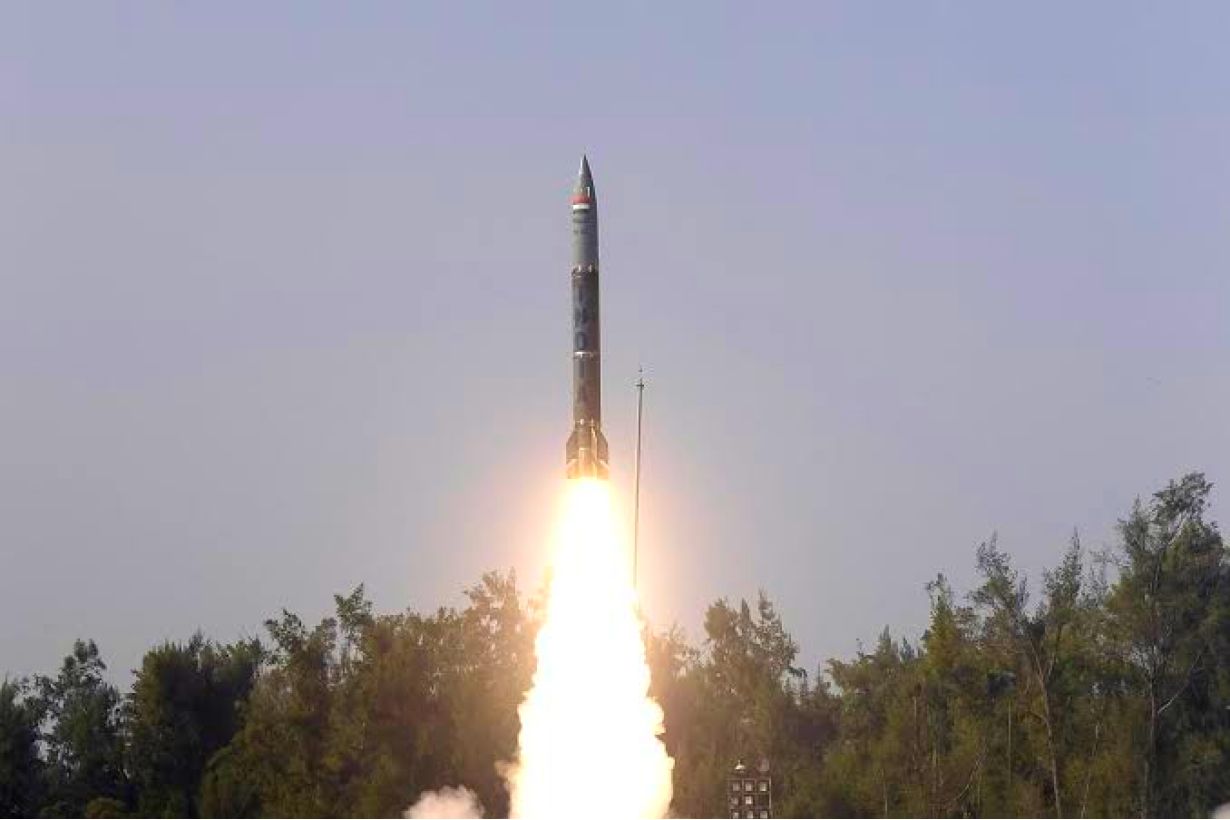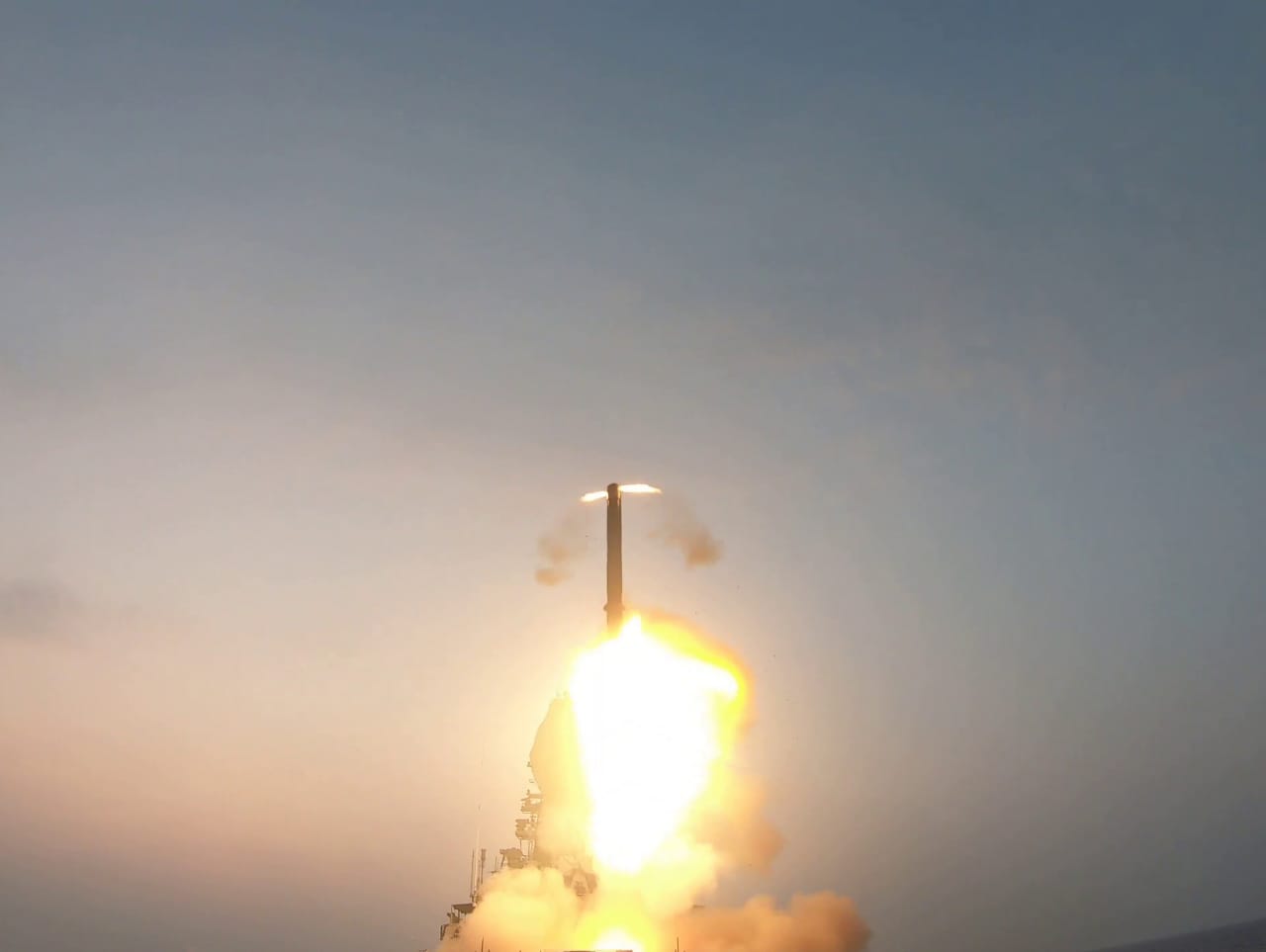India has approved the purchase of 120 Parlay quasi-ballistic surface-to-surface missiles to deploy them along the country’s borders with Pakistan and China, the ANI news agency reported, citing sources in the ministry.
“A high-level meeting of the Defence Ministry cleared the acquisition of around 120 missiles for the armed forces and their deployment along the borders,” a senior defense source was quoted by the news agency as saying.
According to ANI, Parlay missiles can hit targets at a distance of up to 500 kilometers (310 miles) and are difficult to intercept due to their ability to change their path. The development of the missile began in 2015. In December 2021, it was successfully tested twice by the Indian armed forces.
Developed by DRDO, Pralay is a canisterized tactical, surface-to-surface, short-range ballistic missile (SRBM) and has often been compared with the Russian Iskander ballistic missiles.
The newly developed missile, fired from a canister, followed the intended quasi-ballistic trajectory and made a highly accurate strike on the target, validating the control, guidance, and mission algorithms. This quasi-ballistic missile can make precise maneuvers before impacting a target.
One of the most defining features of the Pralay missile is that it uses a fused silica Radar-dome (RADOME) developed by DRDO for locating its target. Radomes are dome-shaped structures that shield radars from inclement weather while enabling the radar to receive electromagnetic signals without distortion or attenuation, thus, ensuring precision.

The Rudra Mk-2, NGARM, and QRSAM are other indigenous Indian missiles that use the fused silica Radome produced by the DRDO. The missile guidance system of the brand-new Pralay missile has a cutting-edge navigation system and integrated avionics.
Pralay, for one, can launch a payload of about 350 to 700 kilograms at targets up to 150 to 500 kilometers away and can be readied for launch from a mobile launcher at short notice. The Pralay integrates several unique technologies and uses a solid-propellant rocket motor.
Even though reports suggest that the Pralay is based on the Indian ballistic missile Prithvi, it has been likened more to the Iskander ballistic missiles of Russia that have been overwhelmingly deployed against Ukraine and have proved their combat prowess.
Pralay Has Similarities With Russia’s Iskander
Russia’s 9K720 Iskander-M short-range ballistic missile (SRBM), designated as SS-26 “Stone” by NATO, has been extensively deployed by its military in the ongoing conflict with Ukraine.
Each launcher vehicle can transport two missiles with a maximum flying range of 310 miles (nearly 500 kilometers). This indicates that the range of India’s Pralay ballistic missile is comparable to the range of Iskander, the latter having struck targets deep inside the Ukrainian territory.
The payload capacity of Iskander is about 1500 pounds or over 680 kilograms. Previous reports had indicated that with a high payload, it could travel a distance of 350 kilometers. However, if the payload mounted on Pralay is bisected, the missile can hit a target as far as 500 kilometers.
As a result, the range and trajectory parameters of the Pralay missile are comparable to those of the 9K720 Iskander from Russia. However, the Iskander missile uses an optical Digital Scene Matching Area Correlator (DSMAC) to identify targets.
The DSMAC is an autonomous missile guidance concept based on area correlation of sensed ground scenes and ensures enhanced precision of attack.
The Iskander missile in Ukraine has revealed that it employs penetration aids (PENAIDs), which take the form of mortar-like decoys to fool enemy radars and interceptor missiles.

In addition, while Both Pralay & Iskander feature an Inertial Navigation System (INS) or Satellite Navigation, the Iskander goes over and beyond and uses Terrain Contour Matching (TERCOM). This essentially means that the Iskander missile is harder to intercept.
Compared to inertial navigation systems, a TERCOM system significantly improves a missile’s accuracy. Due to improved precision, a TERCOM-equipped missile can fly closer to obstacles and at generally lower altitudes, making it more difficult for ground radar to identify.
The plan to acquire the Pralay missile by the Indian military is significant because it comes at a time when the Indian Defense Ministry’s top echelons have been discussing the development of a Rocket force for the Indian Army.

As long-range strategic weapons are under the strategic forces command’s jurisdiction, the Pralay missile and BrahMos supersonic cruise missile will be the longest-range tactical weapon systems in the inventory of the Indian defense forces. The Pralay missile development began in 2015, and it took four years to test the necessary technology.
According to reports in the Indian media, the Pralay missile will allow the Indian Army to target dual-use Chinese infrastructure and military bases on the Tibetan Plateau.
This would enable the Indian military to create effective deterrence with the PLA. Earlier, the PLA was rattled when the Indian side deployed the BrahMos cruise missile along the disputed LAC.
However, as of now, only two tests have been conducted using the Pralay ballistic missile. This could mean that the missile would not be operational for at least a couple of years since supporting mobile platforms will have to be developed for the ballistic missile. More details would, however, emerge after the high-level talks concerning its procurement.
- Contact the author at sakshi.tiwari9555 (at) gmail.com
- Follow EurAsian Times on Google News




